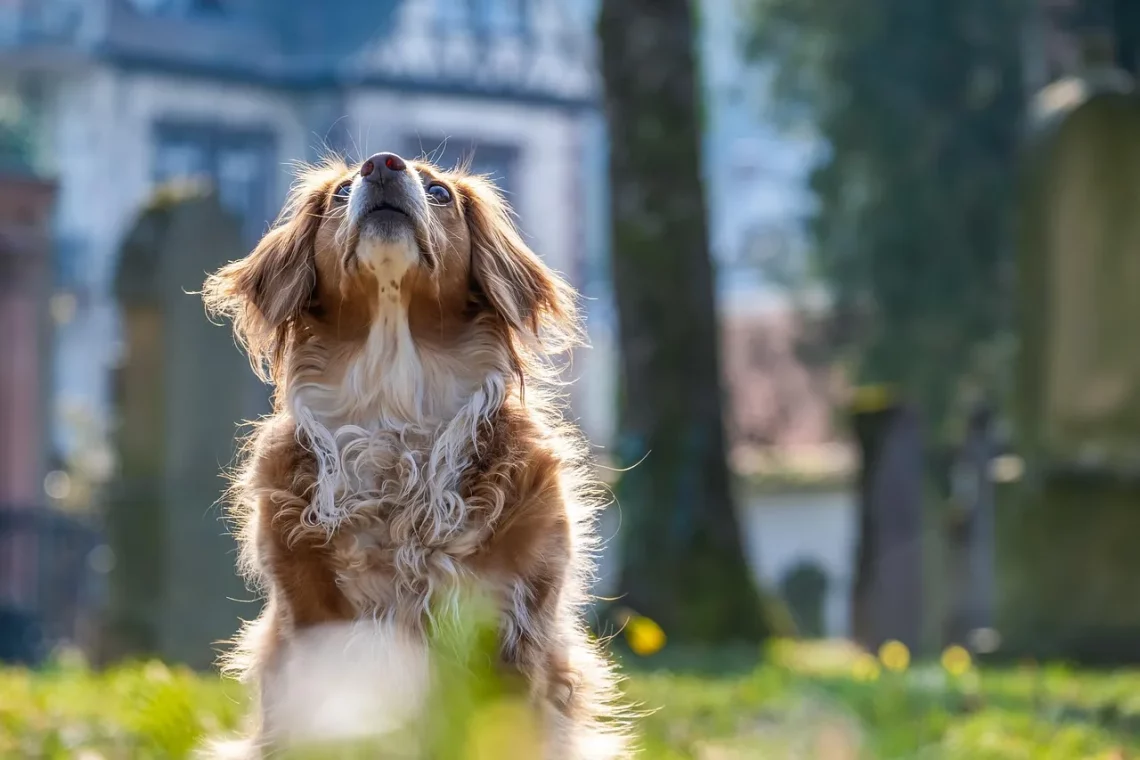
The Joyful Signs of an Excited Dog and How to Engage Them
The bond between humans and dogs is one of the most cherished relationships in our lives. Dogs are known for their ability to bring joy, companionship, and unconditional love. However, understanding a dog’s emotions can sometimes be challenging. Their excitement can manifest in various ways, and recognizing these joyful signs is key to nurturing a happy and fulfilling relationship.
An excited dog often displays behaviors that can be both entertaining and informative. From wagging tails to playful barks, these signals can indicate not only happiness but also a desire for interaction and playtime. Engaging with your dog in these moments is essential for their well-being and strengthens the bond you share. By observing and interpreting these signs of excitement, you can create an environment where your dog feels valued and understood.
Whether you’re a seasoned dog owner or a new puppy parent, learning how to connect with your furry friend during their most joyful moments is vital. This understanding not only enhances your dog’s happiness but also enriches your experience as a pet owner. Let’s explore the various signs of an excited dog and the best ways to engage with them, ensuring a joyful and active lifestyle for both you and your canine companion.
Understanding Your Dog’s Body Language
The body language of dogs can be incredibly telling when it comes to their emotional state, especially when they are excited. An excited dog will often display a variety of physical cues that indicate their happiness and eagerness to interact.
One of the most recognizable signs of excitement is a wagging tail. However, not all tail wags are created equal. An excited dog will typically wag their tail vigorously, often in a wide arc. The position of the tail also matters; a tail held high and wagging rapidly usually signifies a happy and excited dog. Conversely, a slow wagging tail or one that is tucked between the legs might indicate uncertainty or fear.
Another significant aspect of a dog’s body language is their posture. An excited dog may have a relaxed body with their front end lowered, often in a play bow position, which invites interaction and play. Additionally, you may notice your dog jumping up and down or spinning in circles, which are clear indicators of their joyful anticipation.
Ears are also a crucial component of a dog’s body language. When a dog’s ears are perked up and facing forward, it often signifies curiosity and excitement. On the other hand, ears that are flattened against the head can indicate stress or anxiety. By paying attention to these details, you can better understand your dog’s emotional state and respond appropriately to their excitement.
Recognizing these body language cues can enhance your communication with your dog. It allows you to engage with them in a way that resonates with their feelings. Whether it’s playtime, a walk, or simply spending time together, being attuned to your dog’s body language will deepen your bond and help you both enjoy your time together even more.
Vocalizations: The Sounds of Joy
Dogs communicate in numerous ways, and vocalizations play a crucial role in expressing their excitement. From barks to growls, each sound conveys different emotions, and understanding these vocalizations can enhance the way you connect with your dog.
When a dog is excited, they may bark enthusiastically. This type of barking is usually higher-pitched and occurs in quick succession, often signaling a desire to play or engage. If your dog barks when you arrive home or when they see their favorite toy, it’s a clear sign of their joy and eagerness for interaction.
In addition to barking, dogs may also engage in playful growling. This sound is often heard during playtime and is not a sign of aggression but rather an expression of excitement. A dog’s playful growl, combined with other signs such as wagging tails and playful postures, indicates they are having a great time.
Whining can also be a vocal indicator of excitement, especially when your dog is anticipating something they love, like going for a walk or receiving a treat. While whining can sometimes indicate discomfort or anxiety, in the context of excitement, it usually signifies eagerness and anticipation.
Understanding these vocalizations is essential for engaging with your dog. Responding to their excited barks or playful growls can encourage more interaction and play. This form of communication helps build a strong bond between you and your furry friend, ensuring that they feel heard and understood.
Engaging Your Dog During Exciting Moments
Knowing how to engage with your dog when they display excitement can turn joyful moments into bonding experiences. Dogs thrive on interaction, and by responding to their excitement, you can create a positive and stimulating environment for them.
When your dog shows signs of excitement, such as wagging their tail or barking, it’s essential to respond promptly. Engaging in play is one of the best ways to capitalize on these moments. Fetch, tug-of-war, or even a game of hide and seek can provide great outlets for their energy. Keep in mind that different dogs have different play styles, so it’s crucial to find activities that resonate with your specific dog’s preferences.
Training sessions can also serve as an excellent way to engage your dog during periods of excitement. Incorporating fun tricks or commands into your routine can channel their energy into learning. Use positive reinforcement techniques, such as treats and praise, to encourage their participation. This not only keeps your dog mentally stimulated but also strengthens your bond through shared experiences.
Socialization is another important aspect of engaging with your excited dog. Arranging playdates with other dogs can provide a fantastic outlet for their energy and excitement. Supervised playtime with other dogs allows your pet to express their joyful nature while also learning social skills.
Additionally, consider incorporating daily exercise into your dog’s routine. Regular walks, runs, or trips to the dog park can help manage their excitement levels and ensure they have the physical activity they need. A well-exercised dog is often a happier and calmer dog, making it easier to engage them during those joyful moments.
By actively participating in your dog’s excited behaviors, you not only enhance their happiness but also create lasting memories that strengthen your relationship.
Creating a Positive Environment for Your Dog
A positive environment is essential for maintaining your dog’s excitement and overall well-being. Dogs thrive in settings that stimulate their senses and encourage healthy interactions. Creating this environment involves several factors, from physical space to social interactions.
First, ensure that your home is a safe and comfortable space for your dog. Provide a designated area where they can retreat when they need a break from excitement. This could be a cozy bed or a crate that they associate with safety. Having a personal space allows your dog to manage their excitement levels and gives them control over their environment.
Interactive toys and puzzles can also contribute to a positive atmosphere. These tools stimulate your dog mentally and physically, providing a constructive outlet for their energy. Rotate toys regularly to maintain their interest and keep them engaged.
Social interactions are equally important. Regularly exposing your dog to new experiences, people, and other animals can help them become more adaptable and less prone to anxiety. This exposure can be through trips to the park, dog-friendly events, or simply meeting new friends during walks.
Training is another crucial element in creating a positive environment. Consistent training not only establishes boundaries and good behavior but also enhances the bond between you and your dog. Engaging in training sessions can be a fun way to connect and provide your dog with mental stimulation.
Ultimately, a positive environment fosters a happier, well-adjusted dog. By focusing on creating a space that encourages excitement and joy, you can significantly enhance your dog’s quality of life.
In conclusion, understanding the joyful signs of an excited dog and how to engage them is vital for a fulfilling relationship. By recognizing their body language, vocalizations, and creating a positive atmosphere, you can ensure that your furry friend feels loved and valued. Enjoy the journey of exploring these joyful moments together, as they are what make the bond between you and your dog truly special.




